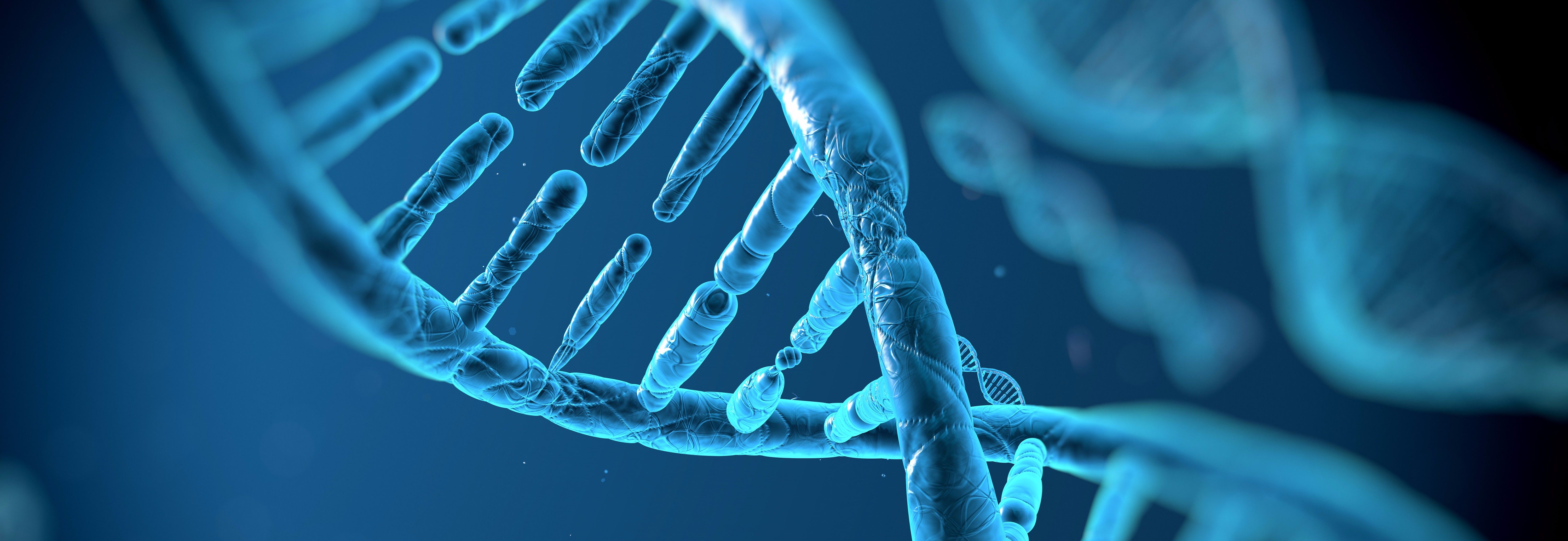Here are some of the amazing technologies being researched to help find the cures.
What is Genomics?
Cancer is an illness that is often caused by mutations, or changes in the DNA genes. A gene contains the blueprint or instruction for the body to make proteins and other molecules. A mutation in the gene can increase, decrease, or change the proteins and molecules that the body is producing. Thus, it is useful to study these changes to figure out what causes cancer. Scientists study genomics to better understand why and how mutations occur, as well as how the body deals with and battles cancer. Since each type of cancer is caused by a different set of mutations, studying genomics can help scientists determine treatments for different types of cancer.
How it Works
Scientists can study genes and mutations by looking at the sequence of the DNA or RNA of a patient. The sequence of a target gene of a DNA can be acquired through various sequencing techniques. Once the sequence is obtained, scientists can compare the sequence to a normal tissue sequence. The difference between the normal and mutated sequence can indicate whether an individual has cancer and where the mutations occurred.
Clinical Trials
Genomics is being used for many pediatric clinical trials. One particular trial, conducted by Dr. Shahab Asgharzadeh, is looking at genes in neuroblastoma patients at three different locations, Children's Hospital Los Angeles, Children's Healthcare of Atlanta, and Cincinnati Children's Hospital Medical Center. The goal of the trial is to sequence the genes of the patients in the bone marrow, bone, or soft tissues, and to determine common genes that can be targeted for therapy. The trials is still occurring, and the results of the trial are yet to be determined.
What is Epigenetics?
In recent years, studies have shown that DNA is not the only instruction manual that is used to make up an individual. Epigenetics, which are not a result of changes in the DNA, also play a role in the physical characteristics. Epigenetics are proteins, RNA, and other components. Epigenetics can be passed down from parents to children or be developed through environmental interactions, such as nutrition, chemical toxins, and stress. It is used to “turn on and off” certain genes in the DNA. However, defects in epigenetics can lead to negative side effects including cancer.
Epigenetics and Cancer
Abnormality in epigenetics is one of the causes of pediatric acute lymphoblastic leukemia (ALL) as well as one of the causes of relapse. While mutations of the DNA are mostly permanent, epigenetic changes can be reversible. As a result, clinical trials are being conducted to treat illness due to epigenetic defects. Most of the clinical trials in treating ALL involving epigenetics have been conducted on adult patients. However, few trials involving pediatric patients are being conducted, many of which focus on relapsed patients.
What is Immunotherapy?
Immunotherapy is a new approach in treating different cancers. This form of therapy strengthens the immune system by increasing the concentration of immune cell. These cells target cancer cells for continuous defense. Unlike other treatments, immunotherapy targets only specific cells resulting in little to no side effects. Until recently, immunotherapy had only been tested on adult patients.
How it works
Each immunotherapy slightly varies. The Seattle Children’s Hospital uses a specific type of immune cells, T cells, to treat childhood cancer. The research and clinical trial is lead by Dr. Michael Jensen and targets leukemia and lymphoma. Healthy T cells are collected from the patient, and reengineered with recombinant DNA. From the clinical trials, 91% of the patients have gone into complete remission.
Similarly, the lab at CHOP targets ALL, non-Hodgkin lymphoma, and chronic lymphocytic leukemia. In this clinical trial, led by Dr. Grupp and Dr. June, T cell from the patients are removed, modified, and reintroduced to the patient. Of the 30 patients treated with immunotherapy in 2014, 27 went into remission. The reengineered T cells remain in the body even after cancerous cells have been destroyed. Thus, this continuous defense of the immune system prevents relapse.
In contrast to specific immunotherapy, nonspecific immunotherapy (NSI) targets multiple types of cancers. Cytokines, which are molecules that are produced by immune cells, are injected into the body and used to target different cancerous cells. They are chemical signals originally found in the immune system. A clinical trial study is currently being conducted in joint in Baylor College of Medicine and Texas Children’s Cancer Center.
First Clinical Pediatric Trial
The first clinical trial of a pediatric patient was in April 2012 at CHOP. Emily Whitehead was battling acute lymphoblastic leukemia (ALL). After relapsing a second time, she was in critical conditions. She was given the opportunity to enroll in a trial led by Dr. Grupp that was specific for ALL. Reengineered immune cells were introduced into her blood, and within days her conditions drastically improved. Since then, she was been in remission. Like her, numerous other patients with no other options left enrolled in clinical trials and went into remission. While it has a positive outlook, many types of immunotherapy are still in the clinical trial stages. Immunotherapy can have a profound impact on the future of cancer treatments.
What are Nanoparticles?
In the past two decades, the use of nanoparticles has greatly increased in the diagnosis and treatment of illnesses including cancer, obesity, etc. Nanoparticle are nanometer-sized molecules that are being used in medicine for numerous purposes. These molecules are smaller than human cells by one-hundredth to ten thousandth times. The small size of these particles allows them to interact and communicate with other molecules in the body. In particular, they are used in medicine to target specific cells or tissues of the body. Nanoparticles can help provide more accurate diagnosis as well as identify diseased cells and supply these cells with treatment.
How do they Work?
Nanoparticles are used as a transport vesicle to transport drugs to specific regions of the body. They can bind and attach to the cancerous cells, and deliver the drug. Nanoparticles then can break down into safe byproducts once the drugs are delivered. The uses of nanotechnology are vast, and potential uses such as nanowires, nanoshells, and cantilevers are being further explored for the treatment of cancer.
With many possible uses, nanoparticles have the ability to enhance current treatments such as chemotherapy, surgery, and radiation by reducing the damage on normal cells. Nanotechnology can aid in chemotherapy by targeting cancerous cells specifically, in surgeries by guiding in the removal of tumors, and in radiation by increasing efficacy. The first two drugs to be put out on the market were Doxil and Abraxane. Many other nanomedicine are in the process of being approved and are in the clinical trial phase. Many of these are adult clinical trials, while very few pediatric clinical trials are being researched.
Clinical Trials
One new pediatric clinical trial for recurrent solid tumors has just begin, and will soon be open for recruitment. The trial will be phase I and is being conducted by Dr. Stuart Cramer in Arcadia, California at the Children’s Oncology Group in collaboration with National Cancer Institution. The aim of the study is to determine how the nanoparticle treatment with other drugs will impact patients with recurrent solid tumors. In addition, the trial will determine whether or not there are any side effects of the treatment and what the best dose would be to treat the cancer. The scientist hypothesize the nanoparticle will help block the growth of cells.
What is Oncolytic Virus Therapy?
Oncolytic virus therapy is a new approach in battling cancer. In this therapy, viruses are injected into the body, and cause cancerous cells to die. Some of these viruses target the cancerous cells by deleting genes needed for replication. The viruses specifically target cancer cells, leaving normal cells unharmed. When the cancerous cell is destroyed, signals are released to target and destroy other cancerous cells. This immune system responds and attacks only the damaged cells.
Clinical Trials
Clinical trials for the following cancers exist: melanoma, lung cancer, stomach cancer, colorectal cancer, bladder cancer, pancreatic cancer, prostate cancer, kidney cancer, uterine cancer, and several types of sarcoma. Only one medication, RIGVIR, has been approved so far. Many clinical trials using oncolytic virus therapy are being conducted using adult patients. Only few clinical trials for pediatric patients are being conducted, but more and more on its way.
Pediatric Clinical Trials
The first clinical trial for pediatric patients began in 2010 using herpes simplex virus (HSV). HSV has been known to target brain tumors, neuroblastomas, and sarcomas. The study was conducted by Timothy P. Cripe at Nationwide Children’s Hospital using 9 patients with solid tumors. He determined that HSV is a safe form of treatment, and that the patients showed positive recoveries. Other clinical trials are also underway using other viruses, such as Seneca Valley virus (SVV) and reovirus. Oncolytic virus therapy has had positive results in treating cancerous cells. With further research through clinical studies, more can be understood about the effect of the virus on pediatric patients.
What are Pediatric MATCH Trials?
MATCH, (Molecular Analysis for Therapy Choice), which has been available for adults, has finally opened for pediatric patients with solid tumors. On July 24, 2017, MATCH Trails opened for children, and will offer kids... (MORE CONTENT NEEDED)
What is CRISPR technology?
One of the newer methods discovered in genome editing is CRISPR. CRISPR stands for clustered regularly interspaced short palindromic repeats. It contains short, palindromic sequences and is a tool used to edit the genome by adding or deleting parts of the DNA. Compared to other techniques, it is a faster, more efficient, and more accurate way of editing DNA. Scientists can use CRISPR as a tool for fighting diseases and illnesses by cutting out portions of the DNA that are not working.
Research Using CRISPR
Currently at the Ann and Robert H. Lurie Children’s Hospital of Chicago/ Northwestern University Feinberg School of Medicine, Simone T. Sredni, M.D, Ph.D. is conducting research on pediatric brain cancer using CRISPR. She is trying to find a treatment for a specific type of pediatric cancer, atypical teratoid/ rhabdoid tumors (AT/RT). She hopes to use CRISPR to find a drug treatment that is less toxic to the children. Dr. Sredni conducted research using zebra fish larvae and they reacted positively to the drug. She hopes to start phase 1 clinical trials soon.
What are the Current Trials?
Only recently was the first trial on human patients approved. In the West China Hospital in Chengdu at Sichuan University, Dr. Lu You conducted the first trial using CRISPR on patients with lung cancer starting August 2016. Lu and his team extracted cells from the patients, modified genes using CRISPR, and then reintroduced it back to the patient. In the Unites States, the CRISPR trials have just been approved. The trials will be led by Dr. Edward Stadtmauer at University of Pennsylvania.






